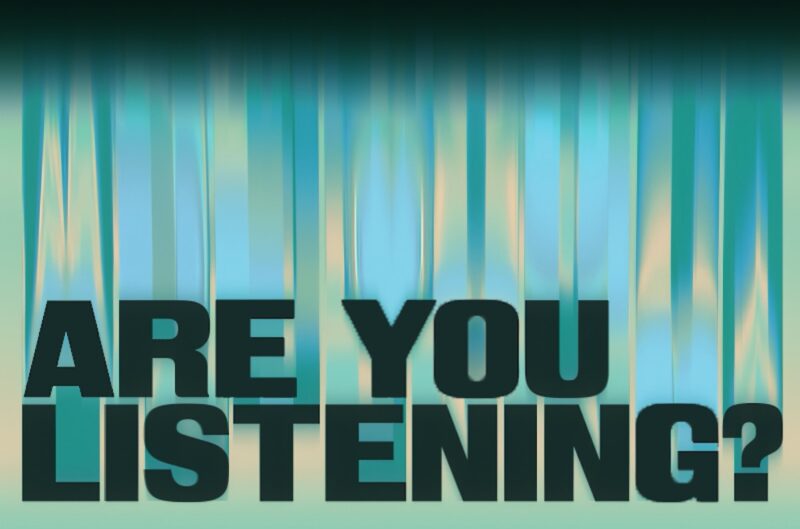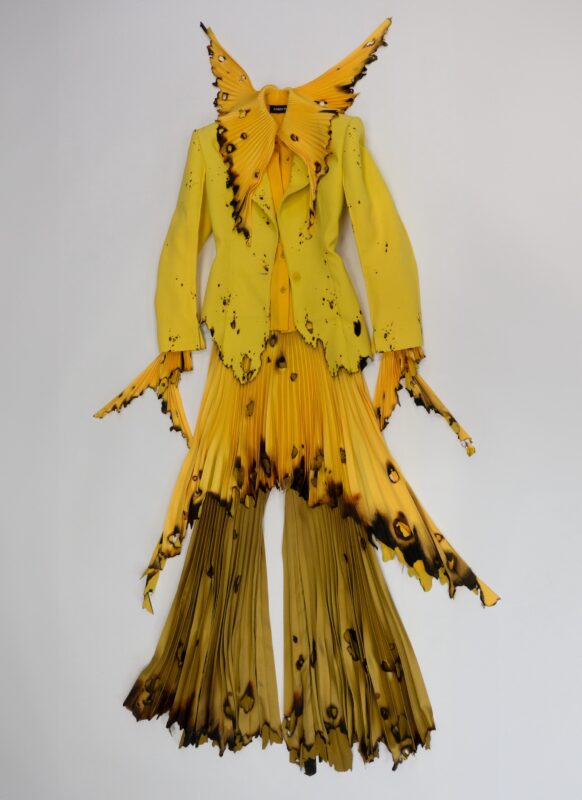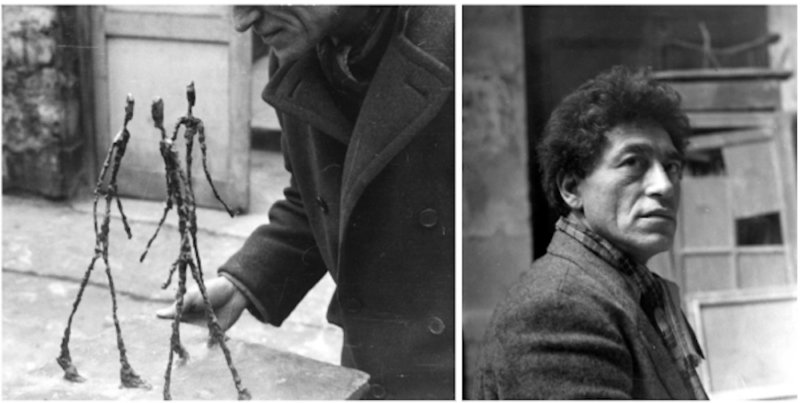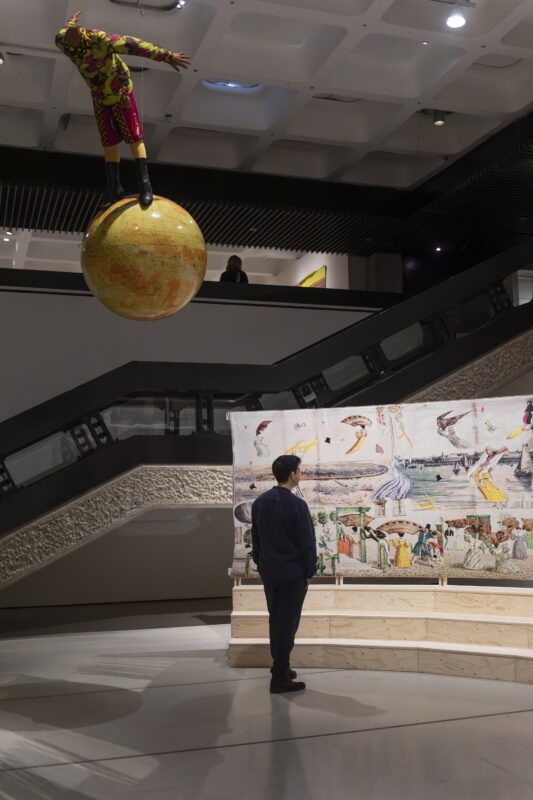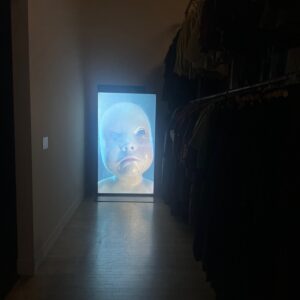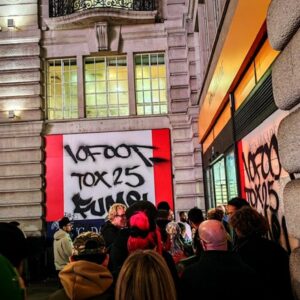The Barbican has announced the first large-scale public commission to be presented in the UK by Ghanaian artist Ibrahim Mahama (b.1987), opening in April 2024.
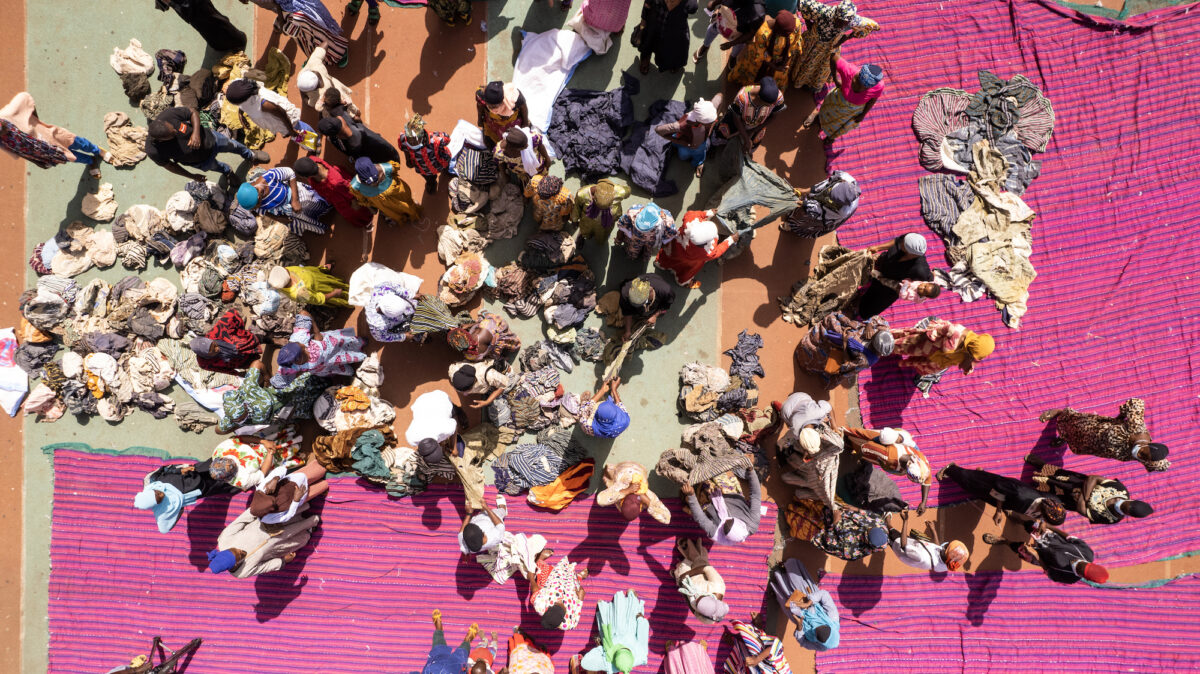
Transforming the Barbican’s famous Lakeside Terrace, which sits at the heart of the brutalist complex, the site-specific artwork will dramatically envelop the building’s iconic concrete exterior with approximately 2000 square metres of bespoke woven cloth.
Purple Hibiscus, named after Chimamanda Ngozi Adichie’s eponymous 2003 novel, is an ambitious new commission created in collaboration with hundreds of craftspeople from Tamale in Ghana. The work has been woven and then sewn by hand to produce colossal panels of pink and purple fabric that will be fitted to the brutalist planes of the Barbican’s Lakeside façade.
Embroidered onto the cloth are approximately 100 ‘batakaris’ – robes worn by Northern Ghanaian royals and ordinary people – which Mahama has collected through a process of exchange and barter from numerous communities across Northern Ghana. These precious textiles, often saved by families over generations, tucked away in wardrobes or stored below beds, carry the imprints of the lives, lineage and power of the figures they once clothed. Worn, degraded and bearing traces of years of use, these smocks are testaments to the endurance of traditional belief systems, and the continued relevance of intergenerational knowledge. Incorporating these smocks into the commission carries forward Mahama’s deep interest in the life cycles of textiles and what can be learnt from the historical memories embedded within them. By collaborating with networks of women weavers and sewing collectives for the production of Purple Hibiscus, Mahama is actively engaging with local economies. He believes that the making of his artworks should be connected to their local contexts and the lives of those communities. The vibrant hues of this particular work are a departure from his usual palette and are an expression of allyship with marginalised communities while aiming to build new alliances. Transported to the Barbican’s Lakeside Terrace, Mahama’s monumental commission gains new resonance. The Barbican Centre stands on the former Cripplegate parish, which was largely destroyed during the Second World War. A centre for the ‘rag trade’ in London, the area was sought out for the buying, selling and production of cloth. Viewed together, the hand-stitched panels of Purple Hibiscus and the hand-pitted concrete of the Barbican’s rough concrete façade offer an expanded reflection on the power and significance of collective labour.
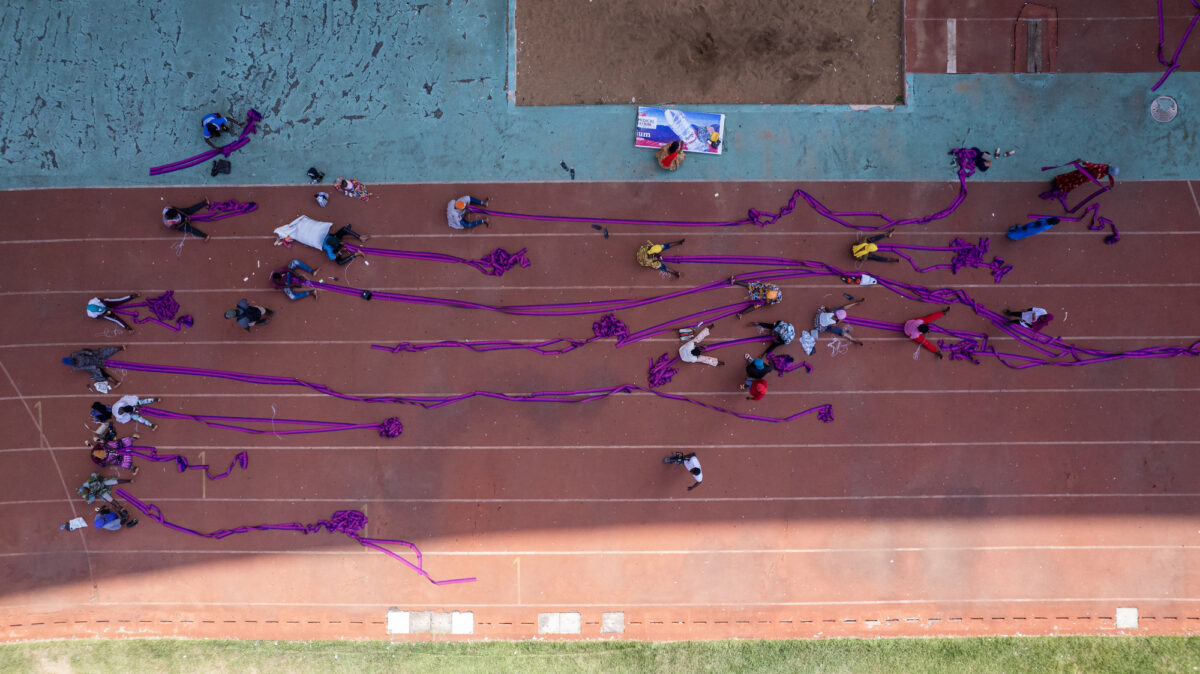
Mahama’s practice is grounded in the democratic belief that art belongs to all. Fearless when it comes to scope and scale, his works claim space, demand questions and enquiry, but also reflect solidarity with the craftspeople, weavers and makers in Ghana with whom he collaborates. Committed to institution building, his Red Clay Studio and Savannah Centre for Contemporary Art in Tamale, Ghana, provide social infrastructure for arts education, exhibition making and residencies. At the heart of Mahama’s practice is his conviction that Ghanaians, and all those outside of the exclusive environs of the art market, should have the opportunity to engage with art.
The commission forms part of the upcoming exhibition Unravel: The Power & Politics of Textiles in Art, which will open at Barbican Art Gallery on 13th February 2024.
Ibrahim Mahama, Artist, says:
It’s like doing plastic surgery, but this time you require a soul that dwells within the body, which is immaterial to build on the physical material. Collecting the individual smocks from communities can be quite challenging, but also opens up a portal of new formal aesthetics. Using the Alui Mahama sports stadium in Tamale as the primary studio space for the production of Purple Hibiscus allowed for us to organise the different layers of the work in ways we couldn’t have possibly imagined. The scale of the material forms needed some level of freedom, which the space gifted.
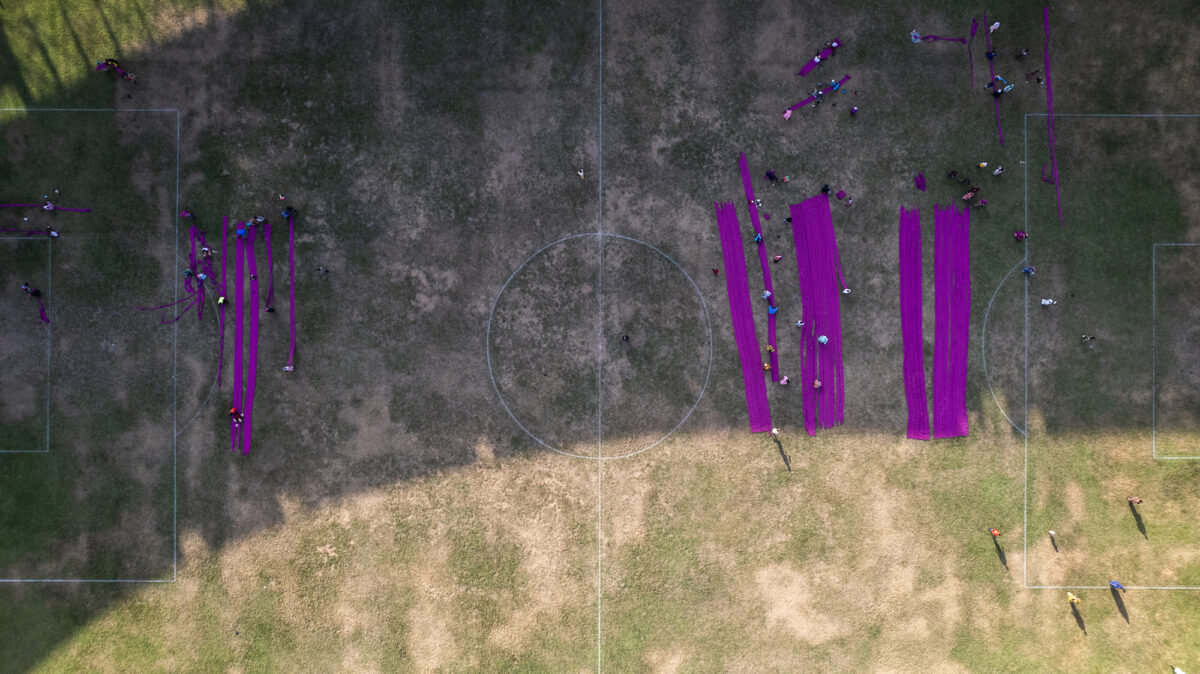
Shanay Jhaveri, Head of Visual Arts at the Barbican, says:
Following Ranjani Shettar’s exquisite commission for the Barbican Conservatory, we are thrilled to be presenting Purple Hibiscus by Ibrahim Mahama. At a time of increasing fracture and disharmony, Mahama, with this monumental site-specific artwork – the second in our newly launched commission series – will transform the Barbican’s iconic Lakeside into a site and space for the commemoration of community, intergenerational memory and solidarity, all achieved by the incredible capabilities and capacity of the human hand.
About the artist
Ibrahim Mahama was born in 1987 in Tamale, Ghana. He lives and works in Accra, Kumasi and Tamale. His work has appeared in numerous international exhibitions including the 18th International Venice Architecture Biennale curated by Lesley Lokko (2023); Thinking Historically towards the Past, 15th Sharjah Biennial, U.A.E (2023); Garden of Scars, Oude Kerk, Amsterdam; The High Line, New York (2021); NIRIN, 22nd Biennale of Sydney (2020); tomorrow, there will be more of us, Stellenbosch Triennale (2020); Future Genealogies, Tales From The Equatorial Line, 6th Lubumbashi Biennale, Democratic Republic of the Congo (2019); Parliament of Ghosts, The Whitworth, University of Manchester (2019); Ghana Freedom, inaugural Ghana pavilion, 58th Venice Biennale, Venice (2019); Labour of Many, Norval Foundation, Cape Town (2019); Documenta 14, Athens and Kassel (2017); All the World’s Futures, 56th Venice Biennale, Venice (2015); Artist’s Rooms, K21, Düsseldorf (2015); Material Effects, The Broad Art Museum, Michigan (2015); An Age of Our Own Making, Kunsthal Charlottenborg, Copenhagen and Holbæk (2016) and Fracture, Tel Aviv Art Museum, Israel (2016). In March 2019, Ibrahim Mahama opened the artist-run project space Savannah Centre for Contemporary Art (SCCA) in Tamale, Ghana, followed by the opening of a vast studio complex, Red Clay, in nearby Janna Kpe in September 2020. Encompassing exhibition space, research facilities and an artist-residency hub, both sites represent Mahama’s contribution towards the development and expansion of the contemporary art scene in his home country. In April 2021, Mahama opened a renovated silo, Nkrumah Volini, in Tamale. This was the third educational institution the artist opened in Northern Ghana in two years.
